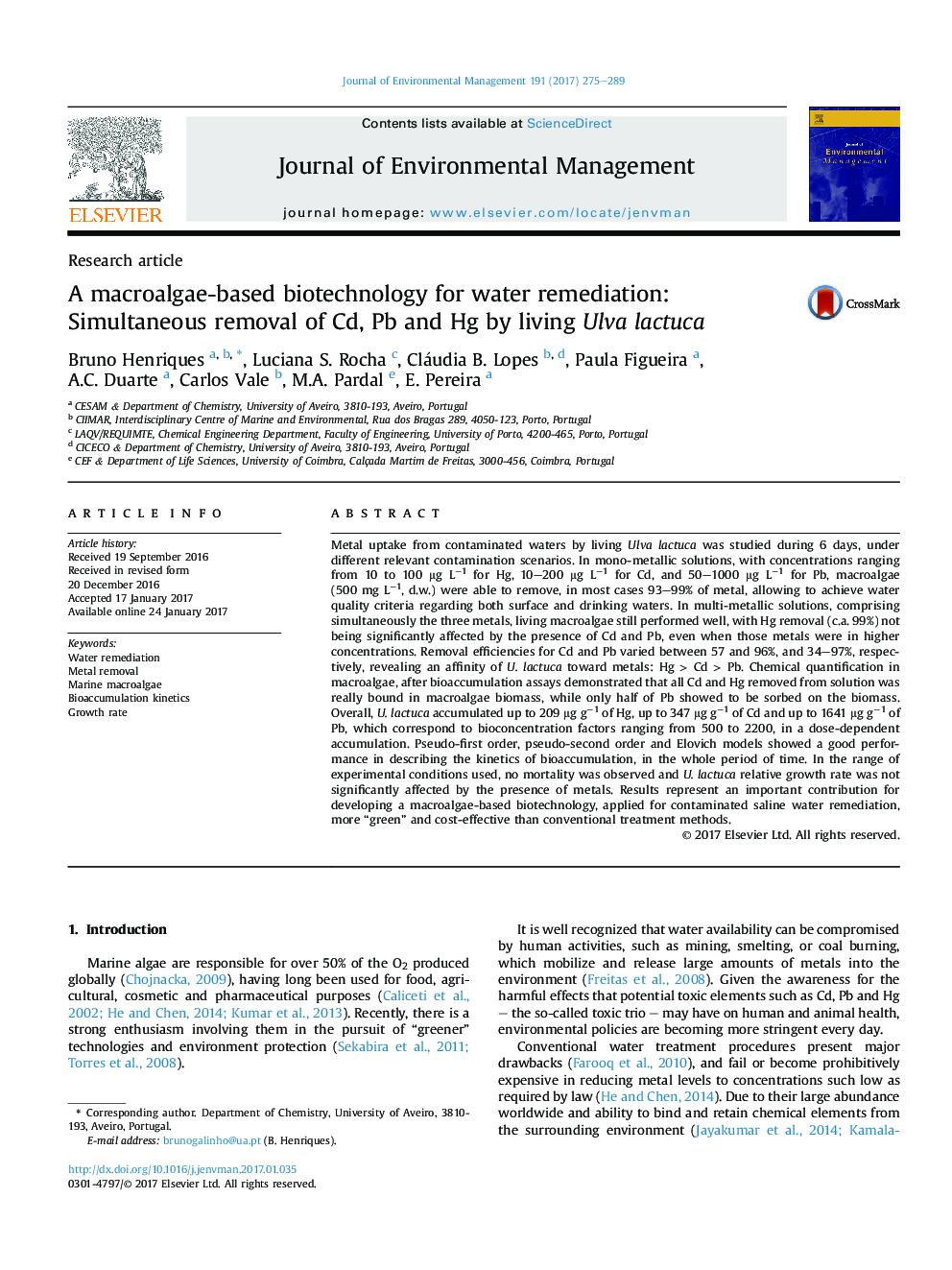| کد مقاله | کد نشریه | سال انتشار | مقاله انگلیسی | نسخه تمام متن |
|---|---|---|---|---|
| 5116796 | 1485224 | 2017 | 15 صفحه PDF | دانلود رایگان |

- Metal uptake by living Ulva lactuca was studied under different relevant contamination scenarios.
- For mono-metallic solutions, water quality criteria regarding both surface and drinking waters were achieved.
- In multi-metallic solutions U. lactuca revealed an affinity of toward metals, Hg > Cd > Pb.
- Contrary to Pb, all Hg and Cd removed from the contaminated water became bound in seaweed biomass.
- Overall exposure to contaminants did not adversely affected the organism's growth rate.
Metal uptake from contaminated waters by living Ulva lactuca was studied during 6 days, under different relevant contamination scenarios. In mono-metallic solutions, with concentrations ranging from 10 to 100 μg Lâ1 for Hg, 10-200 μg Lâ1 for Cd, and 50-1000 μg Lâ1 for Pb, macroalgae (500 mg Lâ1, d.w.) were able to remove, in most cases 93-99% of metal, allowing to achieve water quality criteria regarding both surface and drinking waters. In multi-metallic solutions, comprising simultaneously the three metals, living macroalgae still performed well, with Hg removal (c.a. 99%) not being significantly affected by the presence of Cd and Pb, even when those metals were in higher concentrations. Removal efficiencies for Cd and Pb varied between 57 and 96%, and 34-97%, respectively, revealing an affinity of U. lactuca toward metals: Hg > Cd > Pb. Chemical quantification in macroalgae, after bioaccumulation assays demonstrated that all Cd and Hg removed from solution was really bound in macroalgae biomass, while only half of Pb showed to be sorbed on the biomass. Overall, U. lactuca accumulated up to 209 μg gâ1 of Hg, up to 347 μg gâ1 of Cd and up to 1641 μg gâ1 of Pb, which correspond to bioconcentration factors ranging from 500 to 2200, in a dose-dependent accumulation. Pseudo-first order, pseudo-second order and Elovich models showed a good performance in describing the kinetics of bioaccumulation, in the whole period of time. In the range of experimental conditions used, no mortality was observed and U. lactuca relative growth rate was not significantly affected by the presence of metals. Results represent an important contribution for developing a macroalgae-based biotechnology, applied for contaminated saline water remediation, more “green” and cost-effective than conventional treatment methods.
Journal: Journal of Environmental Management - Volume 191, 15 April 2017, Pages 275-289